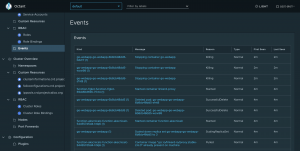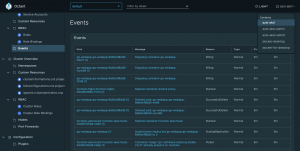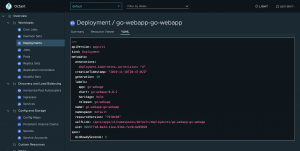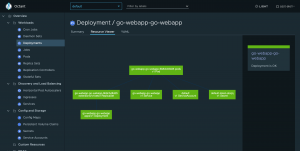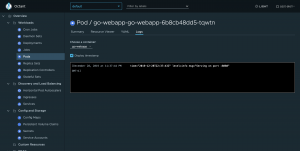When you are running an Azure Kubernetes Service cluster you might deployed the cluster without the Kubernetes dashboard or disabled it afterwards.
-> https://www.danielstechblog.io/disable-the-kubernetes-dashboard-on-azure-kubernetes-service/
Mainly you are doing it for security purposes to prevent an accidentally exposed and unsecured Kubernetes dashboard to the public.
-> https://redlock.io/blog/cryptojacking-tesla
The Kubernetes dashboard is neat for demo purposes, but I had not any use case beside using it for some demos. So, in the end I disabled it on my Kubernetes clusters and was looking for an alternative that is viable for demo as well for production purposes.
In the end I stumbled over Octant. A client-side web-based GUI displaying information about the AKS cluster that is currently selected.
-> https://octant.dev/
-> https://github.com/vmware-tanzu/octant
The first thing that I found is very useful is the fact that you get one dashboard tool for all Kubernetes clusters you have access to. Since Octant makes use of your local kubeconfig credentials and runs locally it is not a surprise to switch between different Kubernetes clusters.
Even you have AKS clusters with Azure Active Directory integration, Octant works correctly.
Some other useful capabilities are the YAML template output view and the resource viewer.
The YAML template output view is like running the command kubectl get deployments <name of the deployment> -o yaml. Only difference here is the colored output Octant provides.
Knowing of which Kubernetes resources your application/microservice consists of is an asset not only for troubleshooting purposes. The resource viewer feature provides you with such an overview. When you then select a specific resource in the overview, you get very basic information on the right-hand side.
Just a click on the name brings you to the selected resource with all its information. In the case of a pod you get an additional tab for the container logs.
In the end I highly recommend giving Octant a try. I really like it and added Octant to my personal Kubernetes toolbox I use in my day-to-day work.
